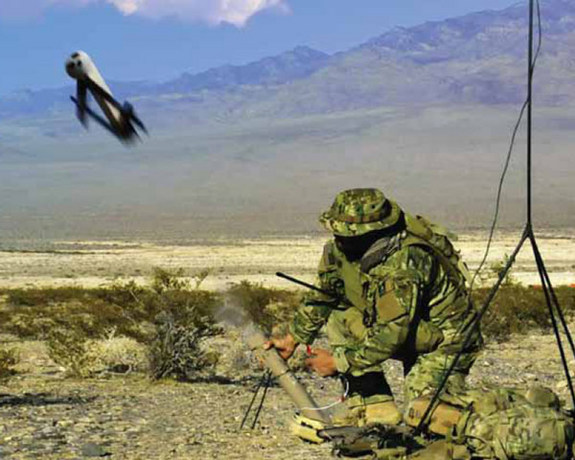Army Wants NonLethal 'Magic Bullet' Drone for Soldiers

U.S. Army soldiers already have suicide drones capable of diving down on enemy snipers perched on buildings or gunmen firing from light vehicles. That's fine for blowing up enemies, but the Army now wants a nonlethal "magic bullet" for taking down human targets.
The Army's new proposal does not specify how a suicide drone diving at 80 to 100 mph should knock out an enemy soldier or insurgent without killing them. But it expects the new weapon to identify a man-size target within 20 seconds while flying at heights equivalent to a 100-story building — or fly around in the air for about half an hour until a target does show up.
Such technology may resemble a smaller, nonlethal version of the Switchblade suicide drones that can target enemies while U.S. soldiers remain hidden out of sight behind walls or other protected spots. The Army has also begun looking into a small hunter-killer drone capable of finding enemies within buildings, sending back their locations, and blowing them up if necessary.
The new nonlethal weapon and its operating console — based on the Lethal Miniature Aerial Munition System — would weigh about six pounds total. That would allow an individual soldier to deploy and fire the weapon within 30 seconds, according to the Army's solicitation for the small-business innovation research program.
U.S. Special Operations Command was previously considering a stun grenade or knockout gas projectile for disabling people inside vehicles or boats, and so perhaps a nonlethal suicide drone could take a similar approach.
The Army's solicitation also suggests how such a nonlethal suicide drone could work in the U.S. homeland — crowd control for police, border protection for Homeland Security or "temporary incapacitation of nonviolent criminals" for police and their SWAT teams. Like so many military technologies, this one could easily come back to the homefront.
This story was provided by InnovationNewsDaily, a sister site to LiveScience. Follow InnovationNewsDaily on Twitter News_Innovation, or on Facebook.
Get the world’s most fascinating discoveries delivered straight to your inbox.



